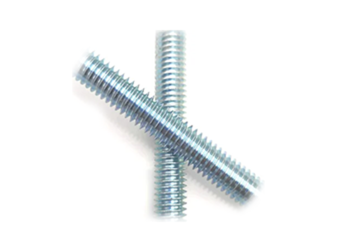Août . 29, 2024 07:42 Back to list
How to Install Carriage Bolts
Installing Carriage Bolts A Step-by-Step Guide
Carriage bolts are a versatile and reliable fastening solution commonly used in wooden structures, outdoor furniture, and various other projects. Unlike traditional screws or nails, carriage bolts have a smooth, rounded head and a square neck that prevents them from turning once installed. This feature makes them ideal for applications where a secure and sturdy fastening is needed. Here’s a comprehensive guide on how to install carriage bolts effectively.
Materials Needed
1. Carriage bolts Ensure you have the appropriate size and length for your project. 2. Washers Use flat washers to distribute the load and reduce the risk of damage to the material. 3. Nuts Matching nuts for the carriage bolts. 4. Drill A power drill with a drill bit that matches the diameter of the carriage bolt shaft. 5. Wrench or socket set To tighten the nuts onto the bolts. 6. Clamps (optional) To hold materials together while you work.
Step 1 Prepare Your Materials
Before beginning your installation, gather all your materials and tools in a clean workspace. It's crucial to choose the right size of carriage bolts for your project, as they come in various lengths and diameters. Also, ensure that the wood or material you are fastening is in good condition to provide a secure fit.
Step 2 Mark the Holes
Identify where you want to install the carriage bolts. Using a pencil or marker, mark the points on the wood where the bolts will go. If you’re joining two pieces of wood, ensure that the holes line up to create a secure connection.
Step 3 Drill the Holes
Using a power drill and a bit that matches the diameter of the carriage bolt shaft (usually a little smaller), drill straight holes through the marks you made earlier. For thicker pieces, you might need to drill through one side and out the other. Ensure that your drill is perpendicular to the material to maintain straight holes.
installing carriage bolts

Step 4 Insert the Carriage Bolts
Insert the carriage bolts through the drilled holes, making sure that the rounded head is on the side that will be visible, or where aesthetics matter most. The square neck of the bolt should fit snugly into the wood, ensuring that it does not turn when you are tightening it from the other side.
Step 5 Add Washers and Nuts
Once the carriage bolts are inserted, place a washer and then a nut onto each bolt. The washers help to distribute the pressure exerted when tightening the nuts, thereby preventing potential damage to the wood.
Step 6 Tightening
Using a wrench or a socket set, tighten the nuts onto the carriage bolts. Be careful not to overtighten, as this can strip the wood or break the bolt. Aim for a snug fit that holds the materials securely together without compromising their integrity.
Step 7 Final Inspection
After all the bolts are tightened, perform a final inspection to ensure that everything is secure and that there are no gaps or misalignments. If needed, you can trim any excess bolt length, but make sure to leave enough for the nut and washer.
Conclusion
Installing carriage bolts is a straightforward process that can greatly enhance the strength and durability of your construction projects. With the right tools and materials, anyone can successfully install these reliable fasteners, ensuring a long-lasting and secure fit for all types of projects. Whether you're building a deck, a piece of furniture, or a wooden installation, understanding how to properly use carriage bolts can make a significant difference in your craftsmanship.


